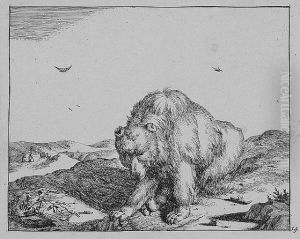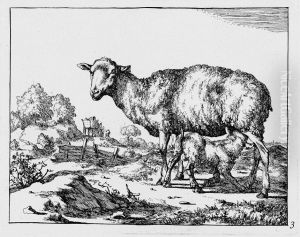Marcus De Bye Paintings
Marcus de Bye was a Dutch artist born in 1639 in Leiden, Netherlands. He was known primarily for his work as an engraver. De Bye came from an artistic background; his father, Johannes de Bye, was also an engraver and likely provided his initial training. Despite the common practice of artists traveling to Italy for further education, there is no evidence that Marcus de Bye made such a trip. His career was largely spent in his native country.
Marcus de Bye specialized in animal depictions, particularly horses and cattle. He worked in a period that was rich in Dutch printmaking and engraving, a time when such skills were in high demand. De Bye’s works often reflected the Dutch Golden Age's emphasis on detailed realism, a characteristic that was appreciated in the genre of animal painting and engraving.
De Bye's engravings often served as illustrations for books, a common practice of the time for artists to supplement their income. Not much is known about his private life or training beyond his familial connections. His works are occasionally confused with those of his contemporaries due to the commonality of subjects and styles during the period.
The exact date of Marcus de Bye's death is not well-documented, but it is believed to have been around 1688. His engravings, however, have persisted as examples of the high-quality printmaking that was produced during the Dutch Golden Age. Today, his works can be found in various art collections, museums, and as part of historical studies of the period's printmaking techniques and practices.

